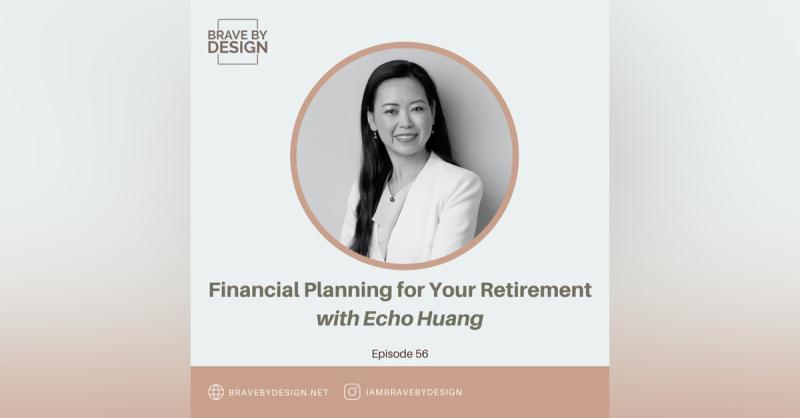Now’s the Time to Reset Your Financial Goals
This year certainly hasn’t been the year any of us expected. Sadly, too many have lost loved ones, found themselves in financial uncertainty, and have concerns about their job security. 2020 has also given us many life lessons and a significant pause, which provides a rare opportunity to reflect and focus on what you want for your financial future.
While many people wait until the end of the year to determine their short- and long-term goals, I believe there’s no time like the present to reset this decade’s financial goals. Now’s the time to think about what you want your life to look like five, ten, even twenty years from now—and specifically, where you will be in your financial journey.
I recommend looking into the future and working backward to understand how goals can be achieved.
It's Time to Map Out Your Next Ten Years
Here are some tips you can use as a roadmap as you begin planning for a financially successful decade ahead.
Ten Years Out
When you’re looking this far into the future, I know it can be difficult to know just where to begin. And, it’s even harder if your current finances have you feeling a bit stretched, stressed, or overwhelmed. It’s crucial when you’re only looking at the month-to-month situation, not to miss opportunities to make meaningful progress toward your long-term goals. So, where do you begin? I say, start by turning off the outside noise and thinking about the big picture.
What are your goals for the next decade? Maybe you want to:
· Buy a home
· Pay off your student loans
· Start a family
· Pay for children’s college expenses
· Pay off your current home mortgage
· Start your own business
· Buy a vacation home
· Improve your portfolio
· Retire/Retire early
Whatever your goals happen to be, the important thing is to identify them, believe in your ability to achieve them, and then start working towards them by getting as specific as you can with each one. For example, you decide you want to buy a home. So, your next step is to get more specific by identifying the amount you want to save for a down payment.
Do things change? Of course, they do. You may have entirely different goals in five years. However, working toward your current goals will still pay off.
Five Years Out
After you’ve identified your ten-year goals, consider where you need to be in five years in order to make them happen. After all, ten-year goals can seem overwhelming and unattainable if you don’t establish mini-goals along the way.
Are there big life moves you need to make? Is there a dollar figure you can identify? Have you taken into account any major expenses you can foresee?
Here are some tips for a few of the goals mentioned above:
· If you are saving money to buy a home in the next five years, consider including some short-term and intermediate bond ETFs in your non-retirement brokerage account to potentially outperform the interest rate you can earn in your savings account. You generally cannot use your retirement assets before age 59.5 without penalties, and it’s prudent to have some non-retirement assets for buying a home, buying a car, and extra cushion to deal with job changes.
· If you plan to live in your current home for at least five years, now may be the right time, with mortgage interest rates at a historical low, to work with your advisor and your mortgage consultant to see if refinancing is right for you. If you are near retirement or just retired and you are able to pay higher monthly payments, refinancing to a 15-year fixed mortgage may be the right choice now as the interest rate for the 15-year fixed mortgage is lower. The key decision is to make sure you still have some cushion to continue funding other goals, such as paying for college, when you choose the 15-year fixed rate with higher monthly payments.
· If your child is going to college within five years, the 529 plan fund allocation should be adjusted accordingly to shift from stocks to bonds gradually.
· If you are planning to retire in five years, make sure that you have reviewed your detailed cash flow projections with your financial advisor who can help you design the right asset allocation for you to stay invested in the stock and bond markets during good and bad markets after you have set aside an adequate emergency fund.
One Year Out
Big goals start with small steps, so don’t lose sight of how powerful one year can be. When planning for a full decade, combine your long-term vision with short-term actions to get you to your desired financial destination. However, it’s important not to focus only on the things that need your immediate attention. Try tackling one or two things in the coming year that aren’t crises, but rather are things that will contribute to your getting closer to those five- and ten-year goals.
I recommend breaking your one-year goals down into actionable monthly items. Even if they seem small, think of each small success as a seed planted for something bigger in the future.
I set my one-year financial goals to focus on savings for retirement goals, college funding goals, reducing debt, increasing my earned income, reviewing tax strategies, and estate plan (if major changes happened). I use the Evernote app to write down my goals and my ideas to achieve these goals as it’s easy to review them from all devices anytime.
Don’t Feel Discouraged
The old adage that Rome wasn’t built in a day couldn’t be more true, especially in these trying times. Even our best-laid plans can be derailed by unforeseen circumstances (such as we’ve experienced this year), and sometimes we get knocked down harder than we expected. Other times, we simply forget to focus on our long-term goals.
If you find yourself faltering from your one-, five-, or ten-year financial plans, don’t despair. Progress doesn’t have to be perfect, and the road to success isn’t always a straight line. Celebrate your wins big and small, show yourself some grace by forgiving yourself for imperfect execution, and keep your sights set on the potential in front of you.
And if you’d like some help on this journey to own your future, I invite you to
schedule your complimentary 30-minute Discovery Call
to learn more about your financial planning needs. It’s one way I can help out during these changing times.













